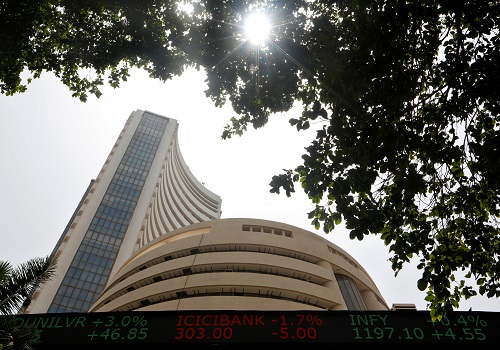Taking stock: Banks participate in the market decline - Kotak Securities

Follow us Now on Telegram ! Get daily 10 - 12 important updates on Business, Finance and Investment. Join our Telegram Channel
https://t.me/InvestmentGuruIndiacom
Download Telegram App before Joining the Channel
Taking stock: Banks participate in the market decline. NIFTY Bank index declined
NIFTY Bank index declined 5% in February 2022, led by select PSU banks, SFBs and regional private banks – the same set which drove the rally in the previous month. Stocks of fintechs, insurers and capital market entities under-performed. Payment activity continues to be strong. Loan growth was steady at ~8% yoy led by retail and MSME. The interest rate environment is starting to turn on the upside as yields continue on their upward trajectory.
Stocks of fintechs, insurers and PSU banks led the decline in February 2022
February was a disappointing month for the market and the BFSI sector was no exception. The Bank Nifty declined 5% mom. PSU banks, SFBs and regional private banks, which drove the rally in January, under-performed in February. Performance of the frontline private banks was comparable (down ~4-6% mom). PSU banks (including SBI, but excluding BOB) saw a sharper decline. Among the non-banks, fintechs and insurers led the decline. On a 3-month basis, BFSI sub-indices have shown a mixed performance. On a 12-month horizon, PSU banks and capital market entities have outperformed the Bank Nifty quite meaningfully. BFSI stocks have held up well as the impact of the Omicron virus strain has been limited so far, while broader credit growth in the system seems to be picking up. However, expectation of a rate tightening cycle across the world is probably inhibiting investors from taking a bullish stance on BFSI stocks.
Payments data continues to be strong; we will watch out for pace of loan growth recovery
Daily payments data for February from RBI indicates that strong trends in payments continued. In particular, a representative subset of card spends data (Exhibit 5) indicates that average daily spends in February were higher than January. UPI transactions also continue to show strong trends (Exhibit 7). Bank credit growth has recovered a bit to ~8% levels, primarily led by retail (up ~12% yoy) and MSME segments, while corporate credit growth continues to be sluggish. Housing (up 8% yoy), credit cards (outstanding up 9% yoy and 13% mom) and gold loans (up 32% yoy) have done well. Loan growth has improved beginning from the last fortnight of CY2021 and we expect the trend to continue. The pace of recovery continues to be the key variable to monitor. Our checks indicate that PSU banks have become more active in the corporate credit segment. While all banks are stepping up on retail credit, we believe that banks with a strong existing retail franchise will benefit more.
Interest rate environment is favorable; NIM expansion unlikely
As per the latest data from the RBI, deposit rates were flat mom at ~5.0%. Both private and PSU banks have cut their TD rates by ~35 bps over the past twelve months. Wholesale deposit cost (as measured by CD rates) has picked up as the rate cycle turns. The gap between repo and 1-year TD rate for SBI increased ~10 bps to ~110 bps after SBI hiked TD rates in the 1-year tenor in January. However, the premium of SBI TD rates over G-sec yields has narrowed from its peak.
Lending rates on fresh loans have been volatile over the past few months. In the past six months, PSU banks have seen a decline while private banks have hiked fresh lending rates. The gap between fresh lending rates of private and PSU banks stands at ~150 bps. The gap between outstanding and fresh lending rates has declined steadily and now stands at ~100 bps. Steep decline in bond market rates till July 2020 had led to a narrowing of the spread between bank funding and bond rates, but bond yields seem to be trending upwards now. In recent months, we note that term spreads and credit spreads in the bond markets have declined from peak levels suggesting that expansion of NIM on corporate book is unlikely going forward. While rising benchmark rates will support yields, increasing competition can play spoilsport.
To Read Complete Report & Disclaimer Click Here
Above views are of the author and not of the website kindly read disclaimer























